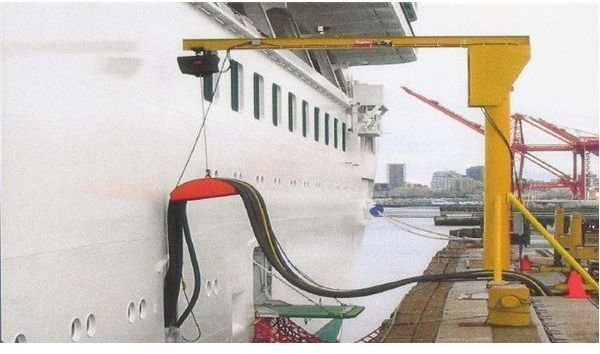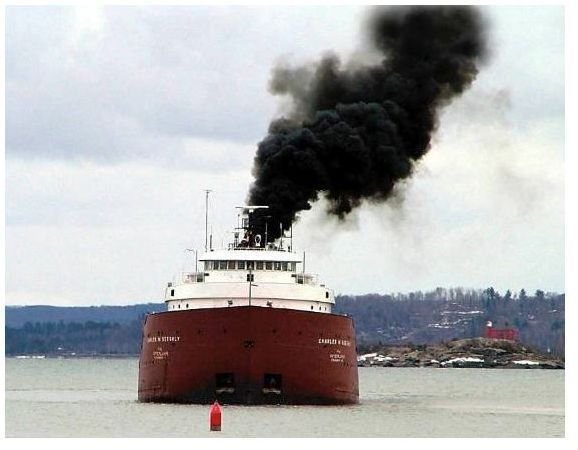Ship to Shore Power Supply or Cold Ironing of Ships
Introduction
Toxic emissions from the ships are becoming a grave problem day after day as pollutants travel from ship to shore. Exhaust gases, noise, and waste water from the berthed ship and terminal equipment have an adverse effect on the marine environment in a variety of ways. Moreover, with the increase in ship traffic there has been a significant rise in the air pollution caused by the shipping industry. It is therefore necessary to take relevant steps to minimize the pollution caused from the ships. Also, it is predicted that if this is not done then by 2020, air pollution from ships will exceed that coming from the land.
Ship’s emissions not only contain carbon dioxide, but also sulphur dioxides and nitrogen oxides along with various other particulate matter. Nitrogen oxide contributes towards global warming whereas sulphur dioxide and nitrogen oxide together contribute towards ocean acidification. Statistics show that due to shipping emissions, approximately 60,000 cardiopulmonary lung cancer deaths occur every year throughout the world. If the shipping traffic continues to increase at the same rate then this number will rise by 40% by 2012.
Though steps such as stricter environmental regulations and low sulphur fuels usage are implemented, they are not enough in comparison to the continuous increase in the shipping traffic. It is for this reason that alternative steps for ship pollution prevention such as cold ironing or shore to ship power supply needs to be taken.
Cold-Ironing

Cold-ironing is a method used to provide shore-supplied electricity to the ship in order to reduce diesel engine emission from ships while they are in port. While the ship is berthing, its auxiliary engines are used for lighting, heating, hot water, air conditioning etc. These operations consume a large amount of diesel and heavy oil, generating harmful exhaust fumes, noise and vibrations. Moreover, emissions from shipping fuel not only affect the whole environment but also impact the health of port workers, on-board personnel, and the inhabitants of port cities.
Cold ironing, also known as alternative marine power system or shore to ship power supply is beneficial because it transfers the power production from the dirty shipboard sources to more environmentally friendly power plants, thus reducing the production of the toxic particulate matters. Moreover, it is proven that the cost of producing electricity on ship when it is at port is much higher than the cost of producing electricity on shore. Thus plugging ships to shore-based power when in port would not only reduce ship’s emissions and overhead costs, but would also reduce wear and tear of ship’s equipment. Click here to read a detailed article on ship to shore power.
Challenges for Shore to Ship Power Supply
The main question following cold ironing or shore to ship power supply is - how clean the shore-based electricity production process is? If shifting the power production from ship to shore increases the load on the power plant and increases the air emissions, then there is no point in using the technology.
Also, out of tankers, containers, and passenger ships, the latter two are best suited for cold ironing. This is because cruise liners and container ships remain at the port for more time as compared to tankers. However, if some passenger liners and container ships are irregular or infrequent at a port but are equipped with cold ironing facilities, then the cost of availing the facility would be much higher than producing power on board. The main reason for this is that the cost of fitting a cold ironing facility on a ship or a port is highly expensive.
Thus, cold-ironing is a feasible option only if the power production facility on shore uses environmentally friendly renewable resources. One more question that arises is whether there is sufficient grid power available for widespread cold ironing at all the major ports on the world.
Image Credits
https://aycu26.webshots.com/image/30345/2003961410584401375_rs.jpg
The Princess Cruises Company
